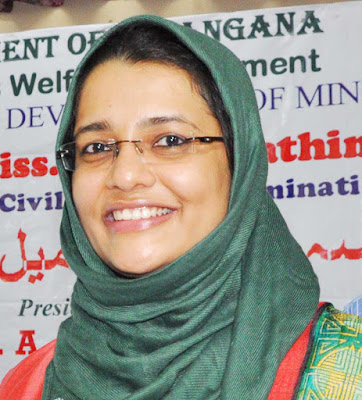What Dasara is to Mysuru, Ramzan is to Hyderabad.Image Courtesy : Google
What Dasara is to Mysuru, Ramzan is to Hyderabad. The nawabi city sheds its laid-back attitude and gets into a hectic mode. As the month progresses, the frenzy only increases. An outsider will get the impression that Hyderabad never sleeps during Ramzan. It’s true to some extent. Parts of the city, particularly areas on the south of Musi, remain open all through the night.
Festivals are mere excuses to trigger shopping sprees. And there is no dearth of festive occasions in India. Essentially a month of piety and fasting, of late Ramzan has been overtaken by consumerism. The commercial exploitation of the holy month has never been so crass. Cloth shops live their best dreams as Hyderabadis turn shopaholics. With revenue spikes, restaurants and businesses laugh all the way to the bank.
This was not the case a few decades ago. People used to shop but did not spend whole nights in search of a particular colour and design. Now what Hyderabad sees is crazy shopping. Though plush shopping malls have sprung up in several areas, it is the Charminar-Patherghatti stretch that throbs with activity. The quaint bazaars around the monument seem to wield a magnetic pull. A friend of mine who stays in upscale Jubilee Hills loves to come all the way to Charminar to shop. “It is the old-world charm that attracts me,” he says.
With Id-ul-Fitr around the corner, the shop-till-you-drop frenzy is peaking. Hyderabadis revel in last-minute shopping. From traditional salwar-suits to kurta-churidars, dry fruits, perfumes, caps and artificial jewellery, everything is up for grabs at Charminar. Women go for ethnic wear, clothes with gold embroidery, sequins and brocade work. Of course Id shopping is never complete for eves without a visit to Lad Bazaar, the bangle market. In the run-up to Id, a traffic advisory becomes necessary for those heading towards Charminar as one will have to brace for unending traffic snarls.
Image Courtesy : Google
Ramzan offers a great religious experience for the devout and for the foodies it is ‘tasting’ time. Even past midnight people can be seen slurping haleem and guzzling chai. When quizzed, my friend shot back: Why is there a light in the fridge if we’re not meant to have midnight snacks?
J.S.Ifthekhar,
Hyderabad based journalist.
Article published in The New Indian Express
Dated June 14,2018



















